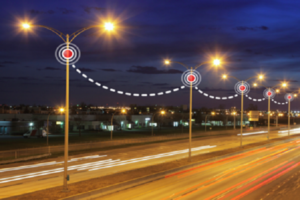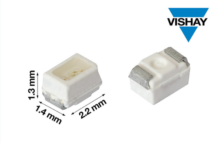
When streetlights first started appearing around the world several centuries ago, they generally consisted of candles inside glass boxes. Every evening, the candles were lit and later extinguished by specially employed workers. It was a slow and labor intensive process, but this primitive system did have several advantages over the networks of streetlights that illuminate modern-day cities.
Modern Electric Street Lighting
In the present day, candles have been replaced by networks of electric streetlights controlled by central computers. This upgrade has made street lighting more efficient, reliable and generally less labor intensive, but these overall improvements have created a number of problems.
Lights for entire neighborhoods are turned on either at predetermined times or based on the light readings from centrally located sensors. As a result, lights are sometimes turned on after it has already become dark or switched on far too early, which creates financial and environmental problems due to energy inefficiency.
These energy inefficiencies are exacerbated by the fact that streetlights generally shine at a uniform level of brightness even if they’re situated in places that receive a minimal number of vehicles and pedestrians throughout much of the night.
Maintenance has also suffered in the modern era because we no longer have people routinely going from streetlight to streetlight. As a solution, local authorities send maintenance crews out to check the networks. It’s expensive and inefficient, and since it also takes a long time for workers to check the entire network, it might be days or even weeks before broken or faulty lights are fixed.
Smart Street Light Systems
With energy costs rising, worries over public safety increasing, and fears about global warming leading to an ever-more widespread call for energy efficiency, there is a greater demand than ever before to solve the problems created by electric streetlight networks.
In large part, this can be done through the replacement of old lights with energy efficient LED units, but the rise of IoT and wireless communication technologies means that cities can now envision – and begin building – sophisticated smart streetlight networks.
AAEON stands at the forefront of these technological innovations, and its Intelligent Lighting Controls are already changing the way cities are lit, providing a network of lights that have the reliability and efficiency of electric lights but also reintroduce the personal, community-based services our ancestors enjoyed centuries ago.
As part of AAEON’s solution, control nodes connected to streetlights via existing NEMA sockets collect data about ambient light levels and communicate with a central server or a cloud-based system using long-range, low-power wireless communication channels.
With the AAEON Street Light Control software application, it’s easy for operators to control entire networks, small subgroups of lights, or even individual lamps. As a result, lights in different neighborhoods need only be turned on when they’re needed, and in quiet areas, they can be dimmed to save energy whenever possible.
The AAEON application also has a service that allows operators to monitor the energy consumption figures of individual lights and receive notifications about any malfunctions. Consequently, maintenance crews can be dispatched to fix faulty lights as soon as problems occur and are not required to continuously conduct physical checks of every light.
Beyond Lighting
Smart street lighting systems help authorities cut costs, reduce energy consumption, and make neighborhoods safer, but the truth is that lighting is the just the beginning of what these systems are capable of. In the same way that candle lighters once helped to bring communities together by passing on news assisting law enforcement officials, smart light systems can serve as the building blocks of a much larger, more complete smart city system.
AAEON recently unveiled its groundbreaking interactive smart light pole, which, in addition to managing the company’s Intelligent Lighting Controls, can be used to monitor air quality and traffic levels. The data collected by citywide networks of air quality sensors will help us combat air pollution, and the traffic level data collected by these devices give city planners and traffic police an insight into the causes of, and possible solutions to, road accidents. It is not a stretch of the imagination to say that AAEON smart city technologies will save not just money and electricity, but also lives.

Intelligent light poles also support interactive multimedia interfaces, which can be used to deliver news and locally targeted announcements, and they can provide additional functions including Internet hotspots, equipment charging stations, and even interactive video games.
For decades, technological advances have been associated with a breakdown in community spirit and a lack of personal service. With the development of IoT solutions and the installation of smart streetlight and smart city networks, however, technology is giving us the tools to reverse these trends and create a future that is brighter, greener, more personal, and more connected than ever thought possible.
For more information, visit AAEON’s Smart Street Lighting minisite



















